Menstruation
Menstruation, or having a period, is when a small amount of bloody fluid from the uterus (womb) is released through the vagina. Menstruation happens because of hormones. People who have uteruses, vaginas, fallopian tubes, and ovaries get their periods. Intersex people might or might not menstruate.
For more information about intersex, please visit -More about intersex.
Every month, the lining of the uterus thickens with blood to prepare to receive a fertilised egg. If the egg is fertilised by a sperm from a male, pregnancy occurs. When the egg is not fertilised, a menstrual period occurs.
Not everybody who gets a period identifies as a girl or woman.
For more information on gender identity, please visit -Gender Identity.
Girls have thousands of eggs inside their ovaries. At puberty, these eggs start to mature and begin to pop out of the ovaries into the fallopian tubes one at time, every month (at first, this is not regular).
Periods usually start between 12 and 14 years, but can start earlier or later. Periods last between three and six days but can be longer or shorter. Most girls have periods but there are medical conditions that prevent menstruation. Certain disabilities affect menstruation but generally, girls with disabilities do have periods.
When the egg travels from the ovaries to the uterus, it is called ovulation. This is when having sex is most likely to result in pregnancy.
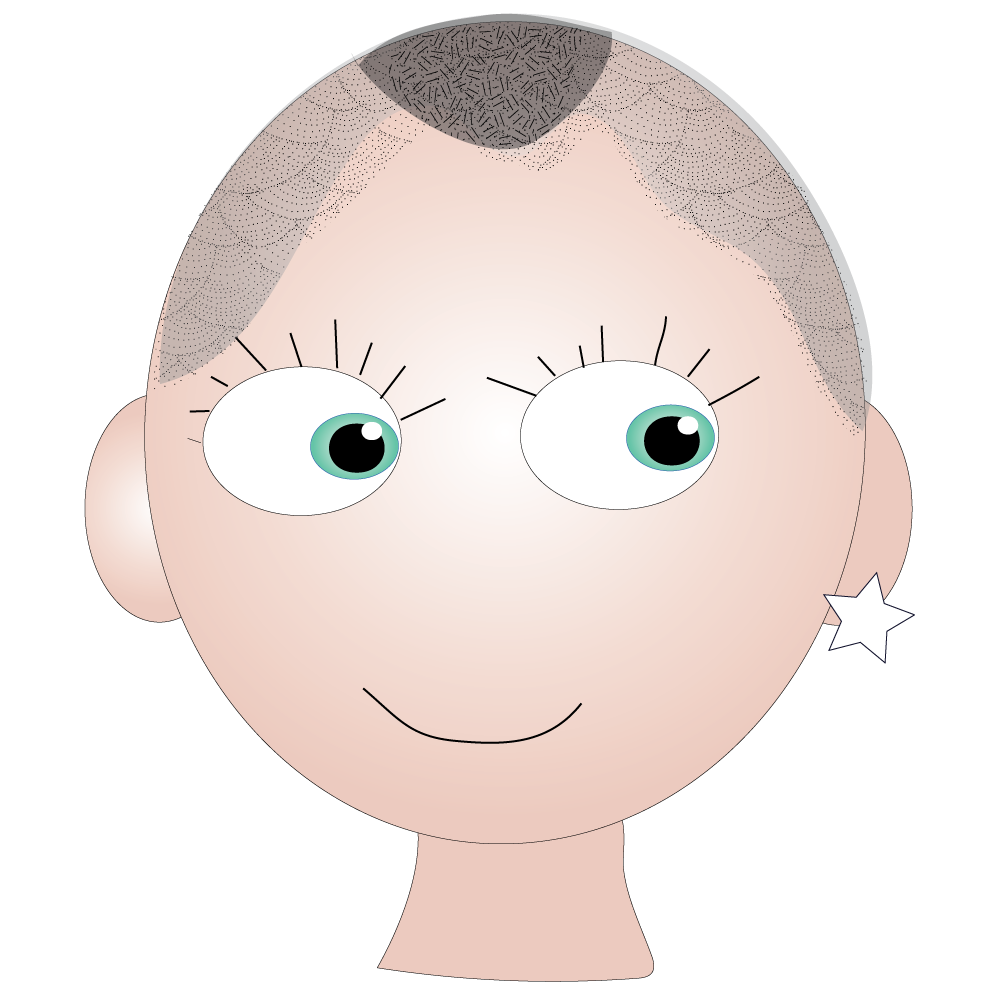
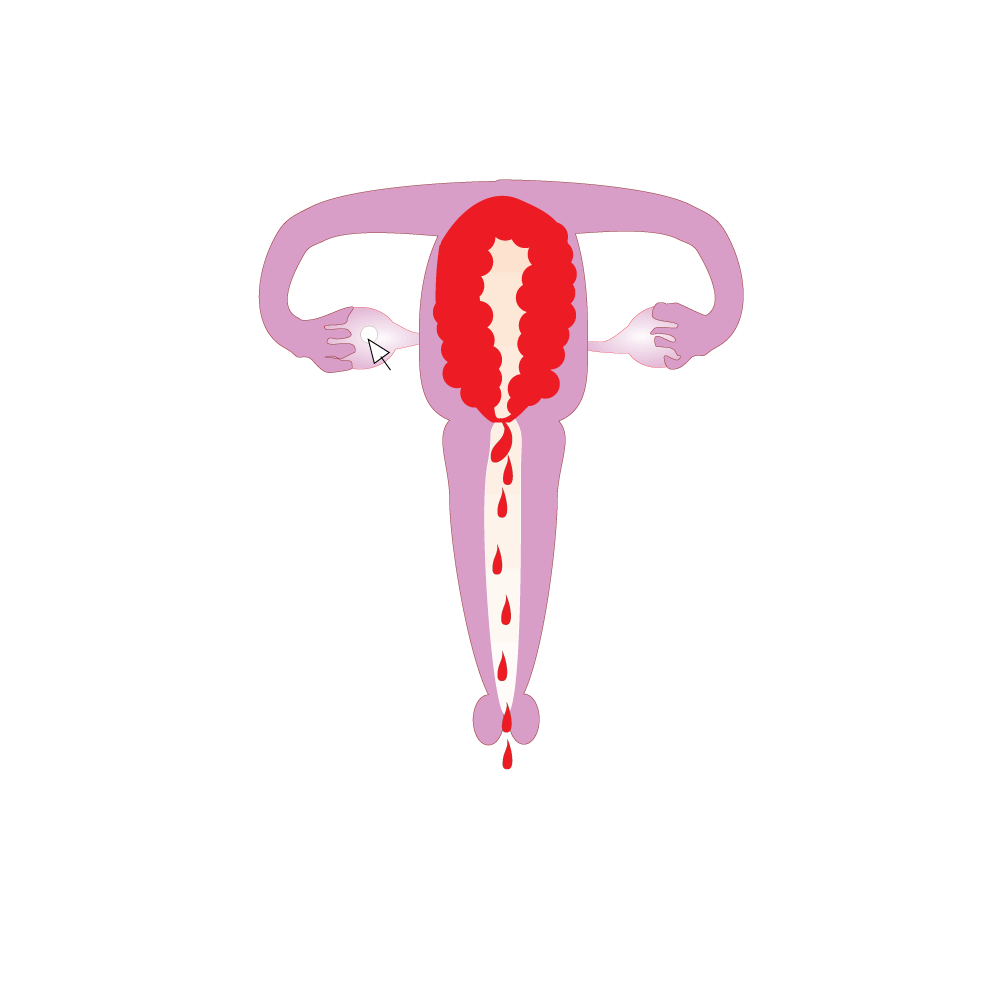
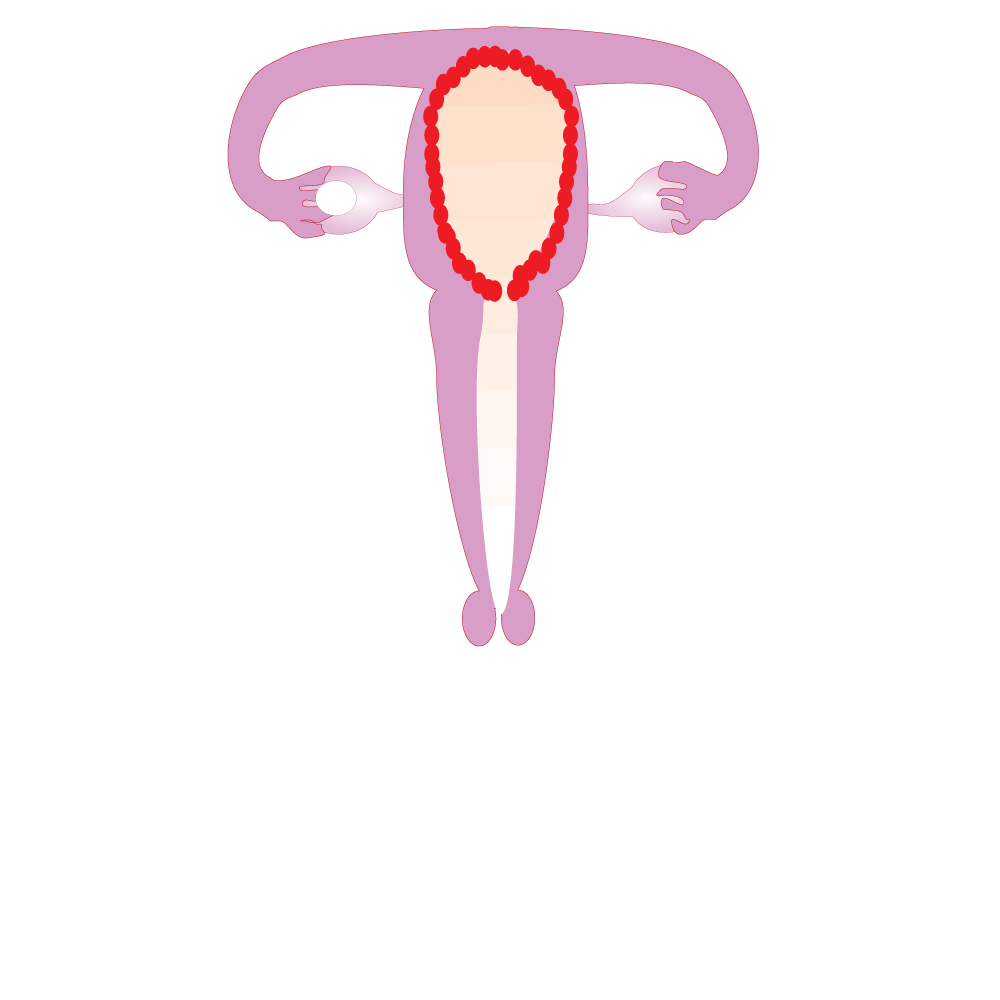
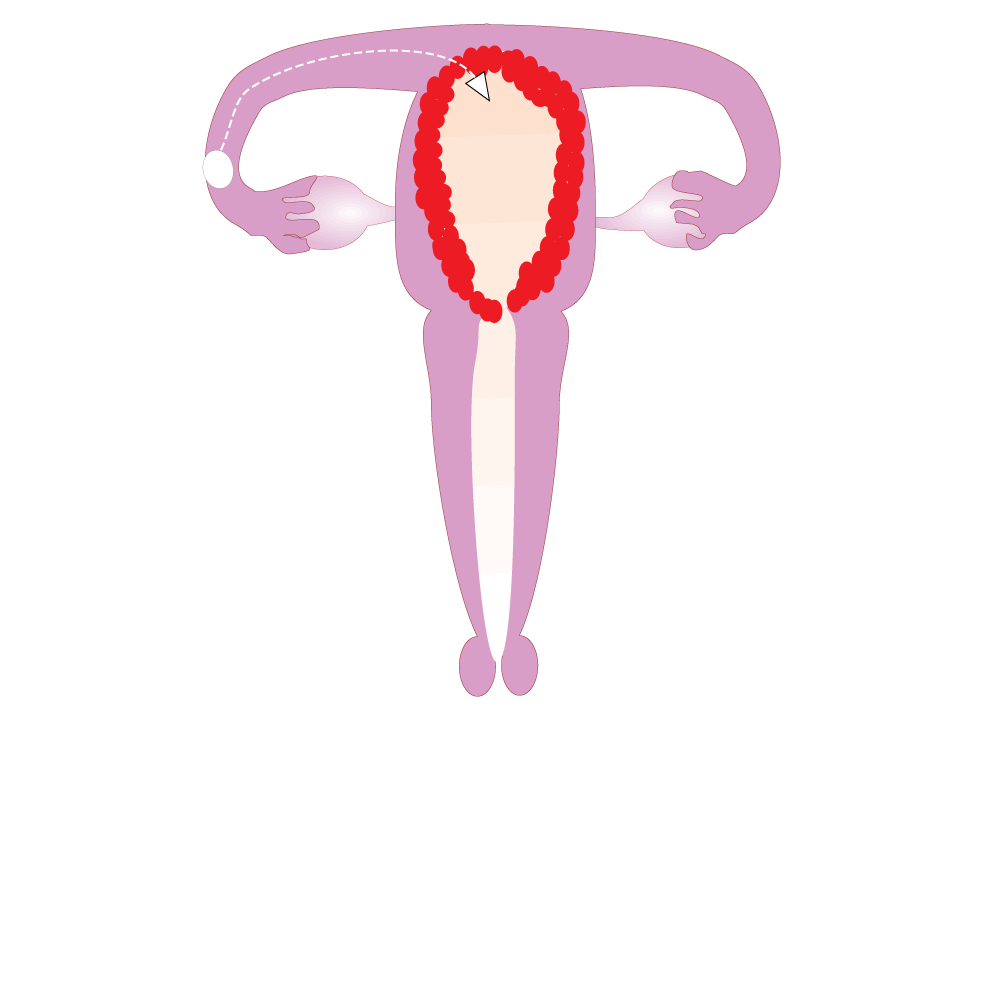
Every month, one of the eggs travels towards the uterus.

If people have sex and the sperm of the male reaches the egg while it is in the uterus, then the egg is likely to be fertilised and the girl becomes pregnant (if not, a menstrual period occurs).
An egg travels towards the uterus in the fallopian tube every month. Unprotected sexual intercourse can result in sperm entering the vagina and reaching the egg in the fallopian tube.

If the egg has reached the uterus at this point, the sperm and egg join together

Fertilised egg = pregnancy. Cells start to divide to form an embryo which attaches to the lining of the uterus.


Periods usually start from the age of about nine years and stop around the age of 45-55 years. The time when periods end is called menopause.
Everyone who menstruates has the right to period products that suit them. It is also important they have all the information, health services and support they need to manage pain or distress caused by hormonal changes due to menstruation.
During menstruation, girls need to use something to soak up the blood. This also prevents their clothes from being stained.
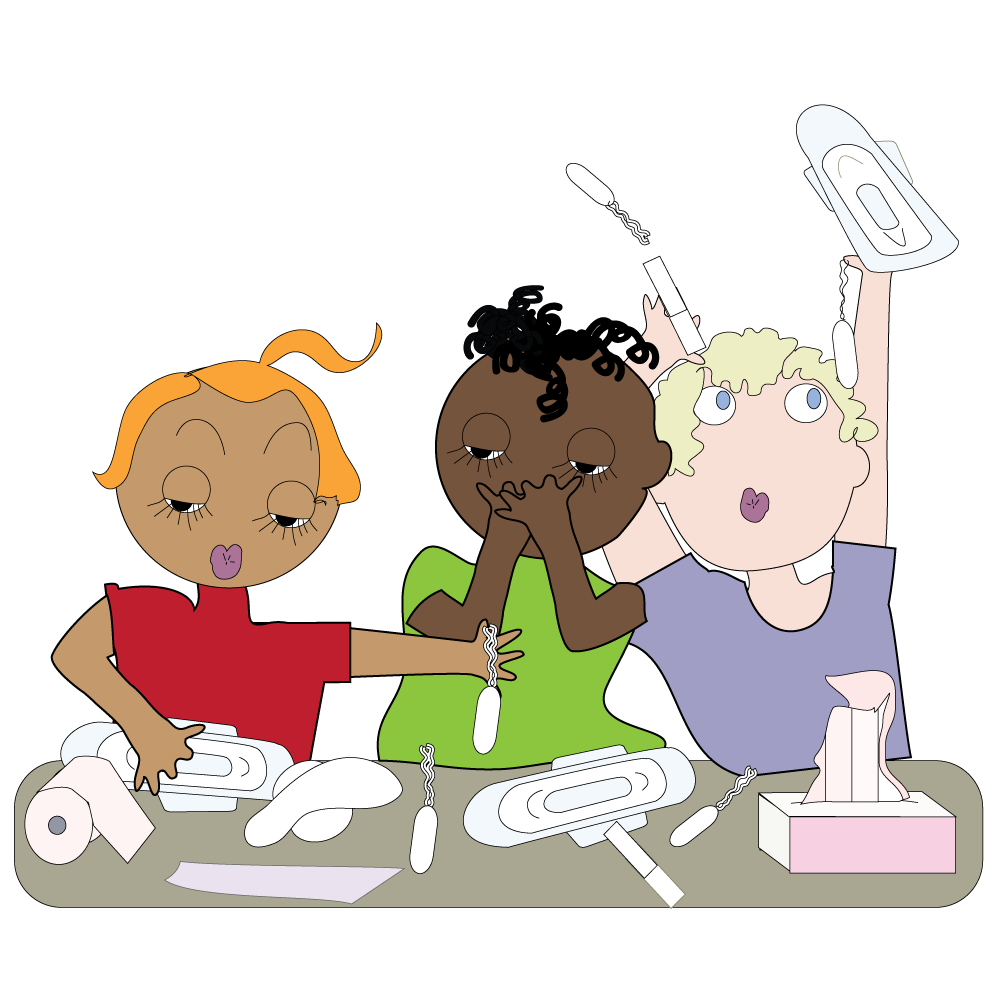
How much bleeding is “normal” during a period?
The most common amount of menstrual flow in a whole period is about two tablespoons (30ml). Everyone is different. Some people’s menstrual flow is just a couple of drops daily; for a few it might be two tablespoons or more on some days. Factors such as age, height and weight and whether a person has had children, can affect their period.
Girls use a lot of methods to soak up the blood
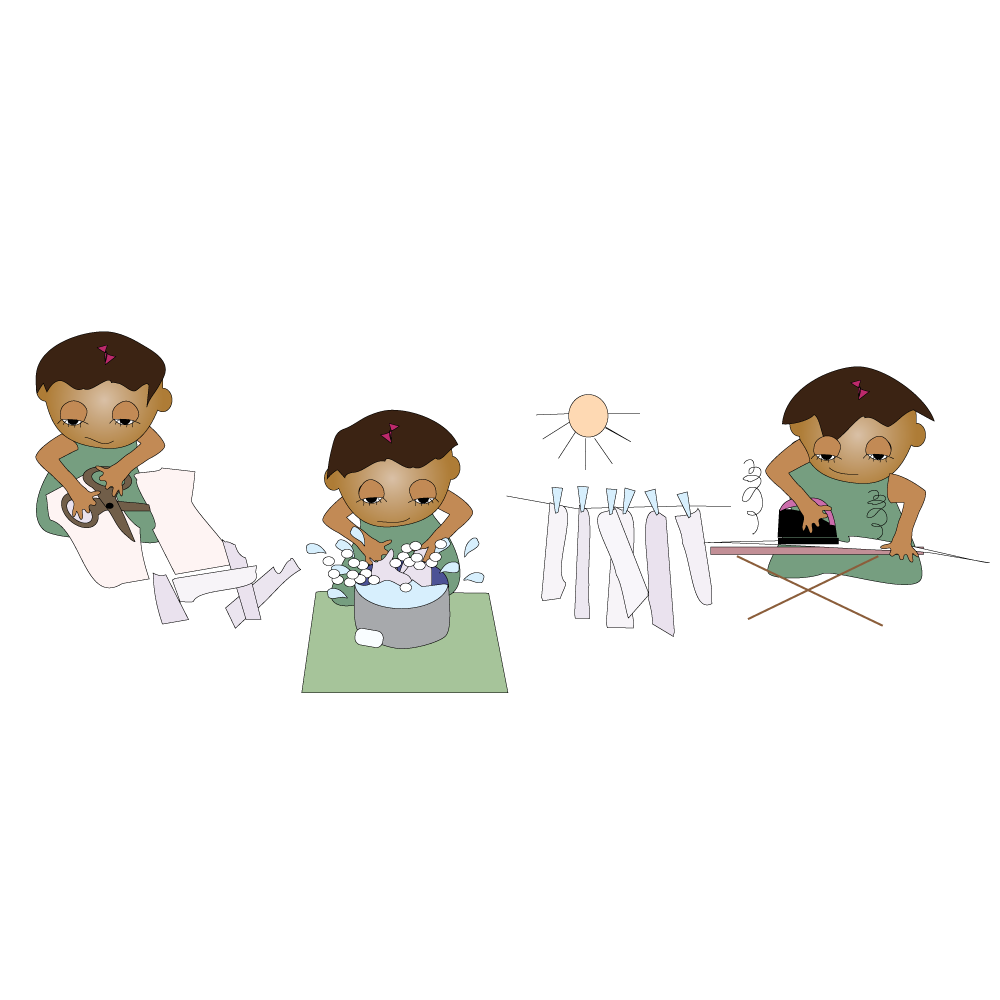
Any clean material that easily soaks up liquid like old cut up t-shirts can be used. Fold the material well into a pad-like shape and place inside the panties between the legs. These should be changed often and washed with soap and cold water, then dried. If possible, they should be ironed to kill germs.
Sanitary towels / pads are special pads usually made out of cotton wool and can be bought at some shops. Some pads are disposable, and others are washable. They are also placed inside the panties between the legs. Some have a sticky side to hold the pad in place. Some have ‘wings’ that help prevent leaks. A medium pad holds a teaspoon (5ml) of menstrual fluid.
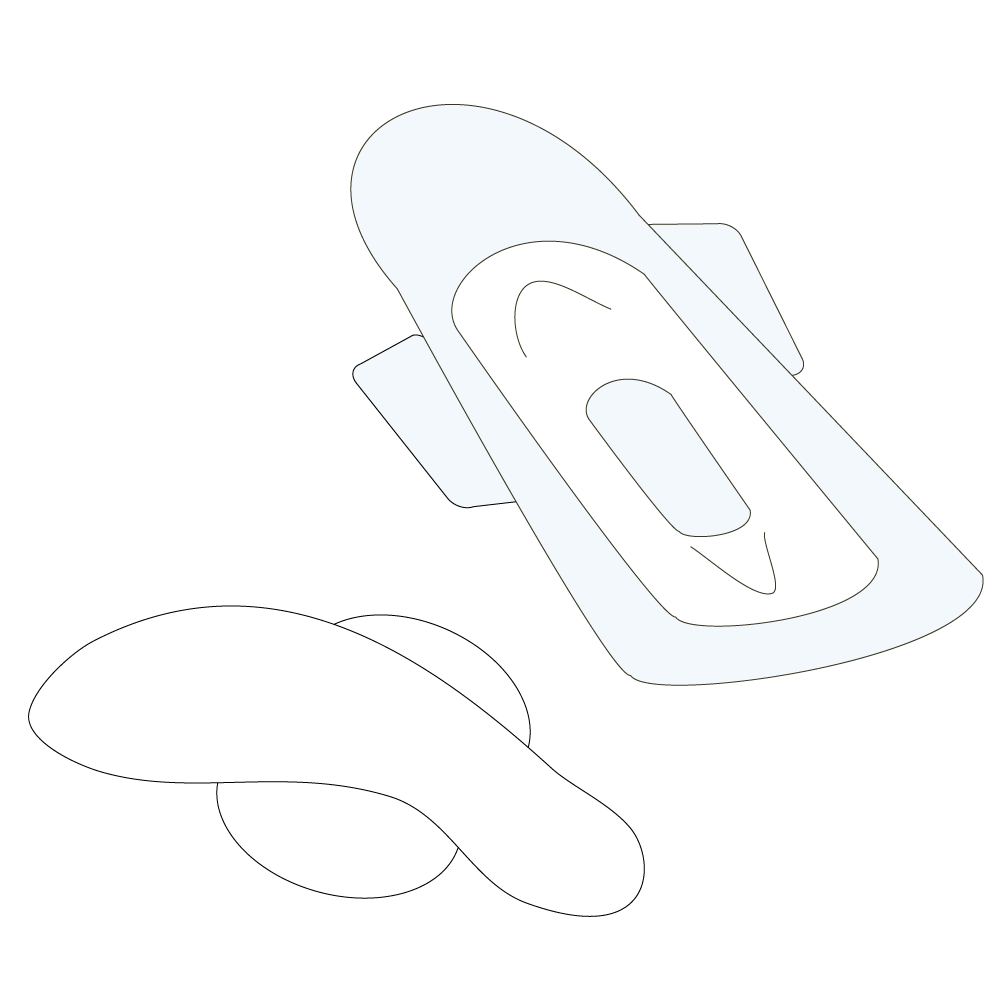
Tampons are tubes of cotton wool that are inserted into the vagina to catch the blood. They should be used one at a time, and changed often to prevent infection. It is important to make sure that the last tampon is removed at the end of the period.
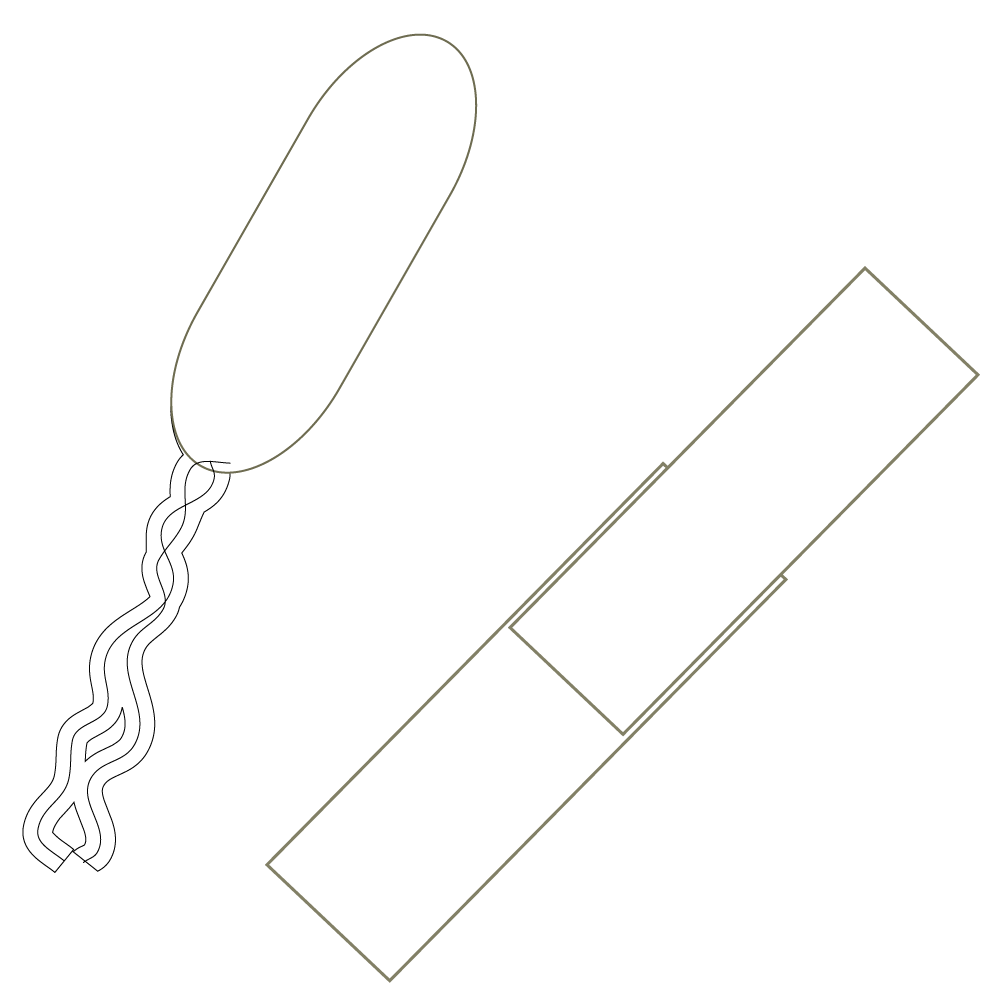
Toilet paper, cotton wool or tissues can be folded into pads and placed inside the panties between the legs. Make sure that bits are not left in the vagina as this can cause infection.
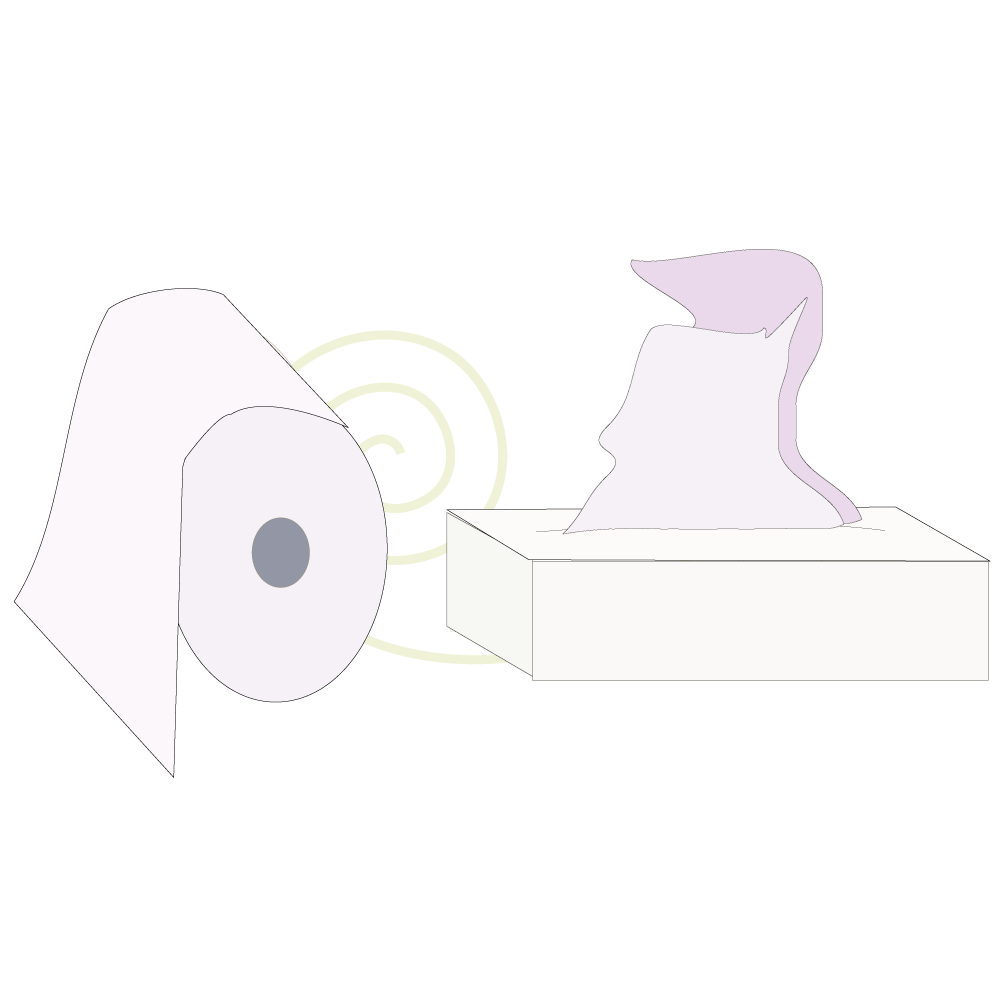
Menstrual cups are usually made of latex-free silicone. The cup is inserted into the vaginal opening (instructions are provided). They can be worn for up to 12 hours at a time, are easy to clean and easy to sterilise. They can last for years if looked after correctly. They are also better for the environment.
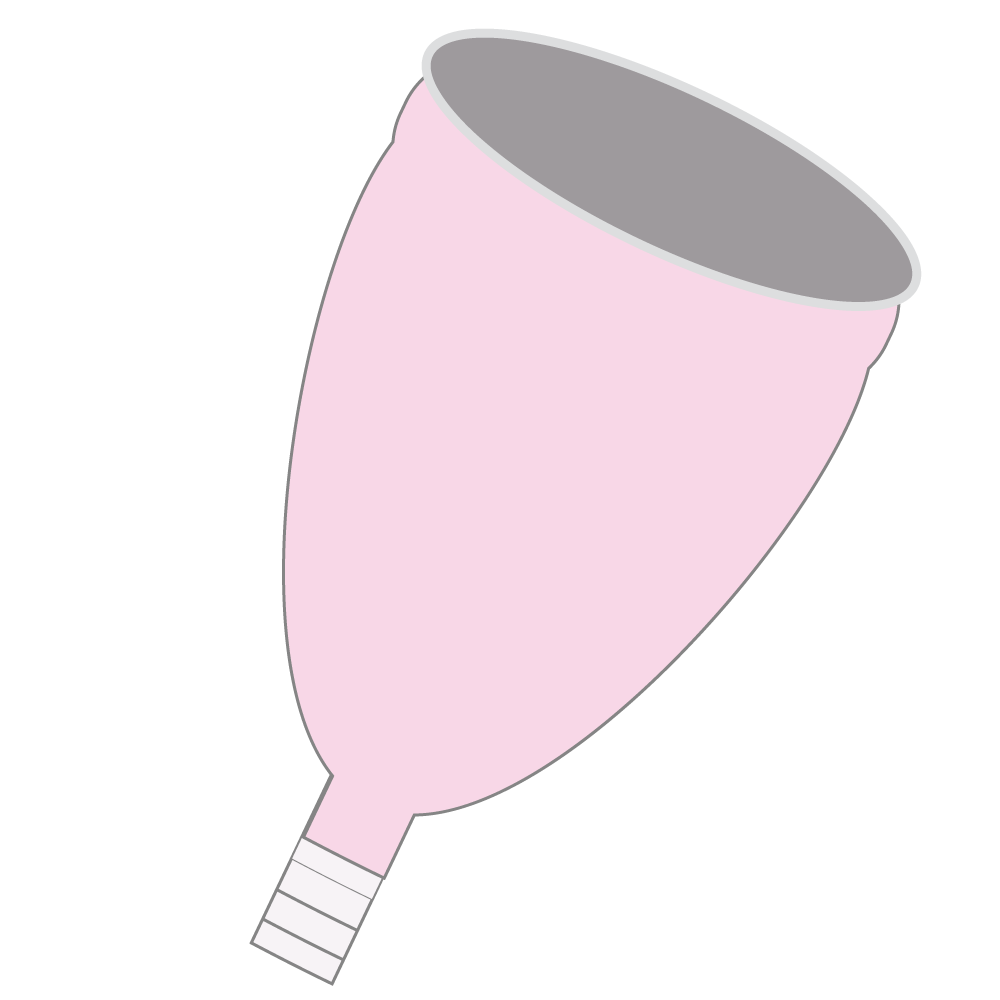

Pads are worn inside the underwear.
Tampons and menstrual cups are worn inside the vagina.
Can I use one pad or tampon overnight?
Depending on your flow, a pad will usually last through your night’s sleep without leaking. It is better to use a pad than a tampon overnight. This reduces the risk of bacteria build-up that can lead to infection.
How often should I change my pad or tampon?
It is important to change the pad or tampon regularly to prevent leakage and growth of bacteria. It will depend on the person’s menstural flow and where they are (at school, work or travelling) when they can change. It is advisable to change the pad or tampon every 4-6 hours to prevent leakage or infection.
It is important to wash often. Menstrual blood is not dirty but it can become smelly after it comes into contact with air.
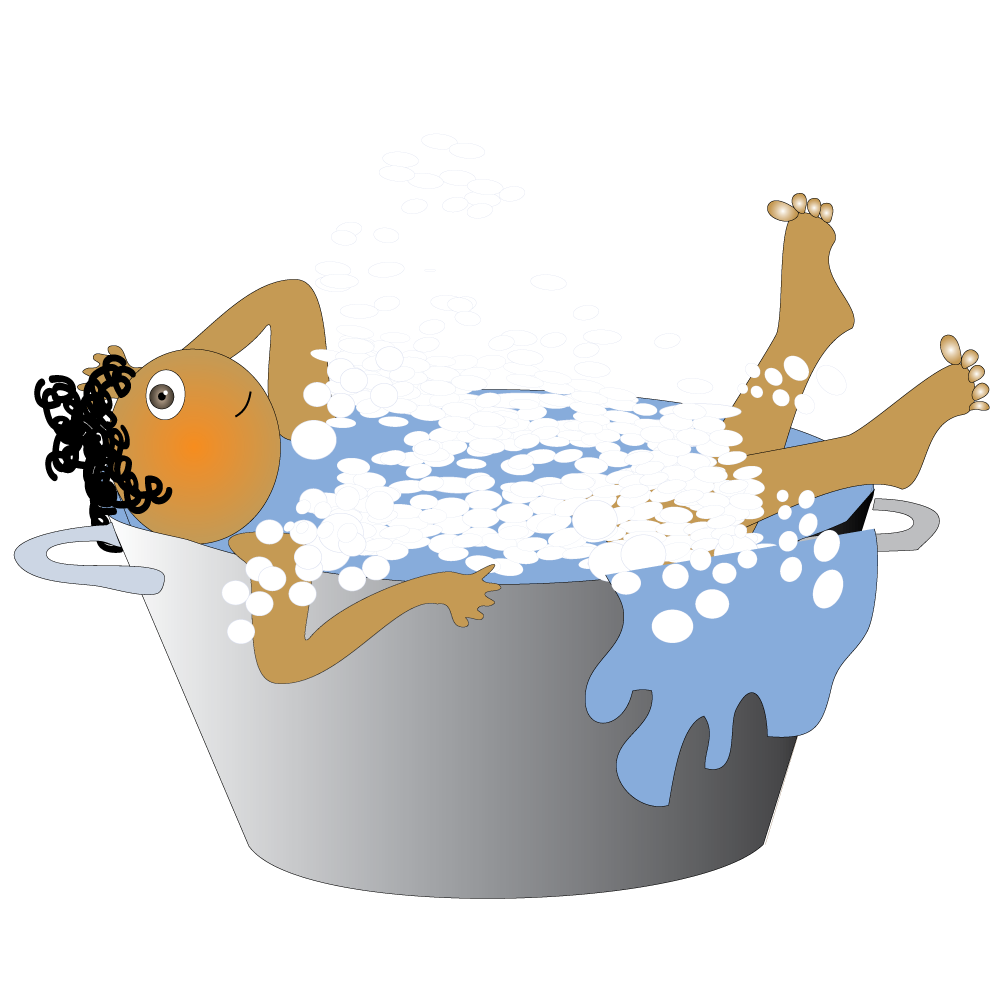
Sometimes girls are afraid that other people can see the pads or cotton rags. Asking a friend or looking in the mirror to check if it shows is all that is needed. A pad feels much bigger than it looks.
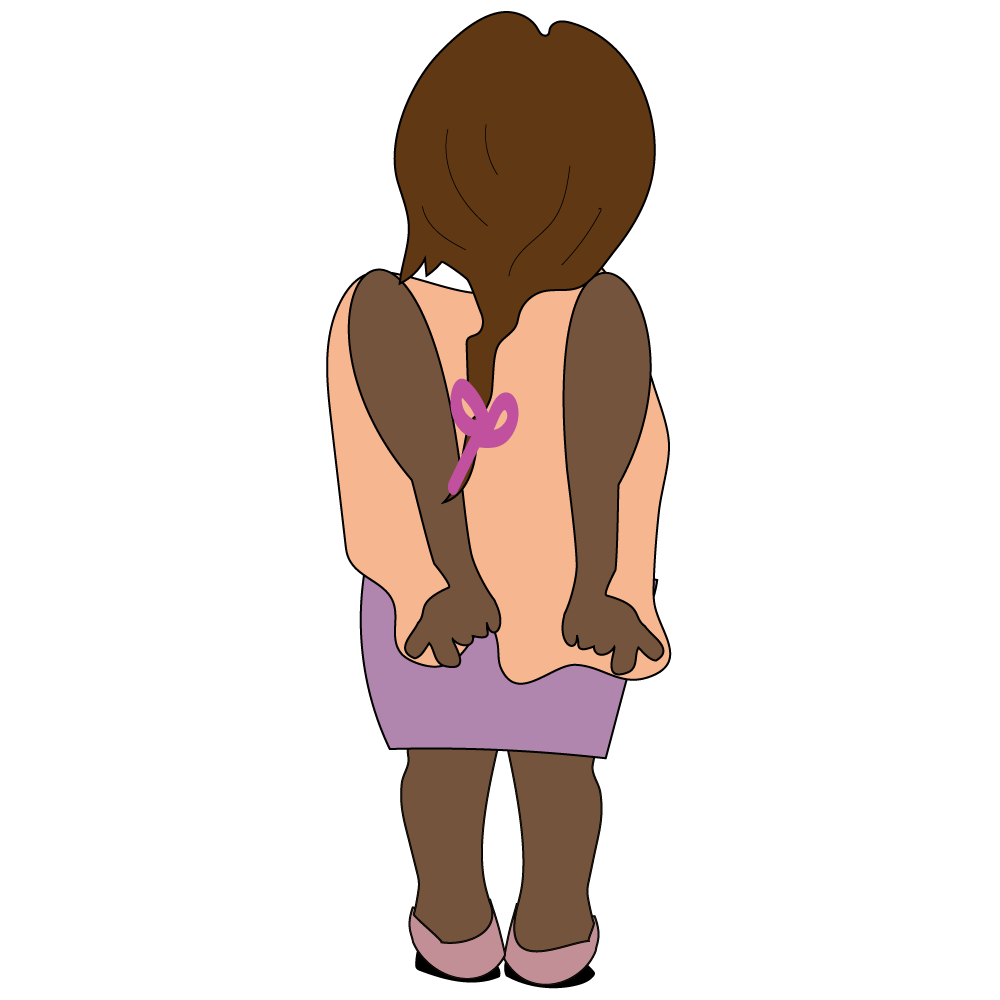
How long does a period last?
Menstrual bleeding usually lasts 4 – 6 days – bit it can be shorter or longer. Bleeding may not occur at regular intervals, or at the same rate throughout the day or night, or from one day to the next.
Wrap sanitary towels/pads/tampons in paper or plastic and dispose of them carefully. Do not flush any products (except toilet paper) down the toilet. Wrap your pad or tampon in toilet paper and put in the dustbin.
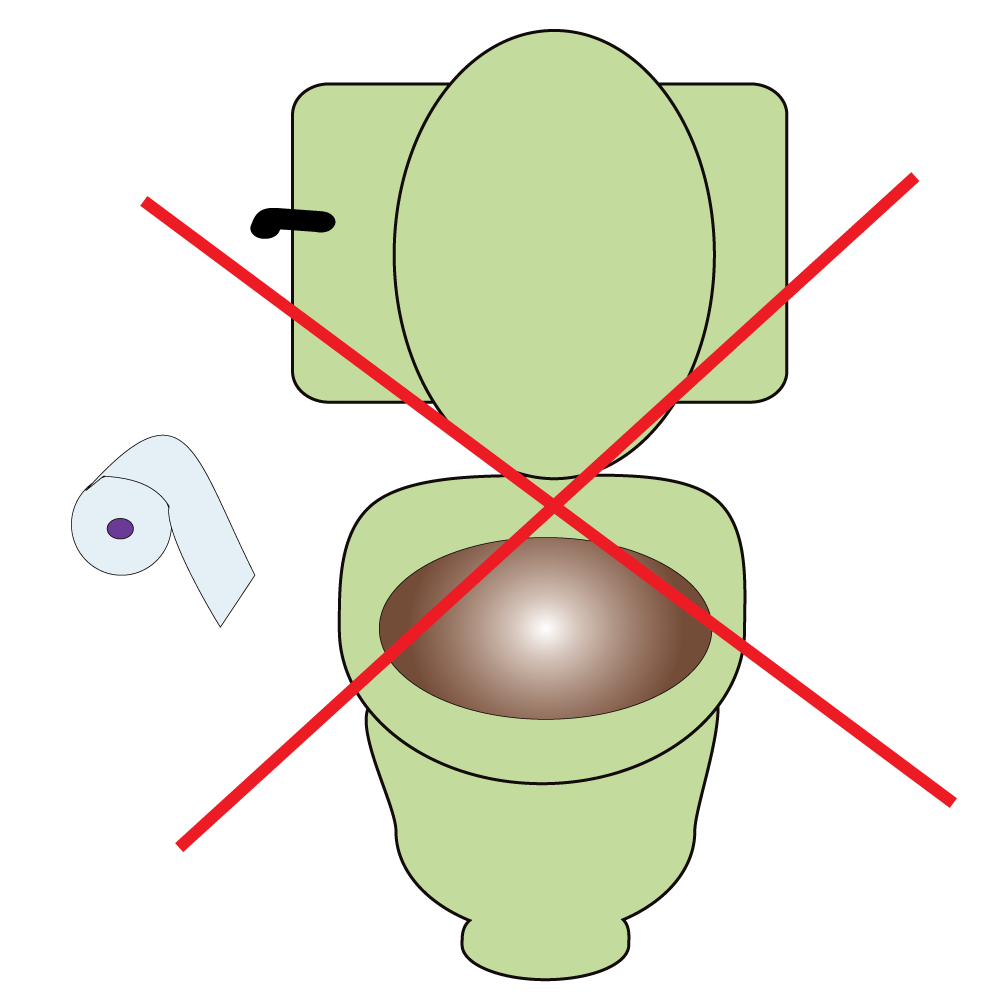
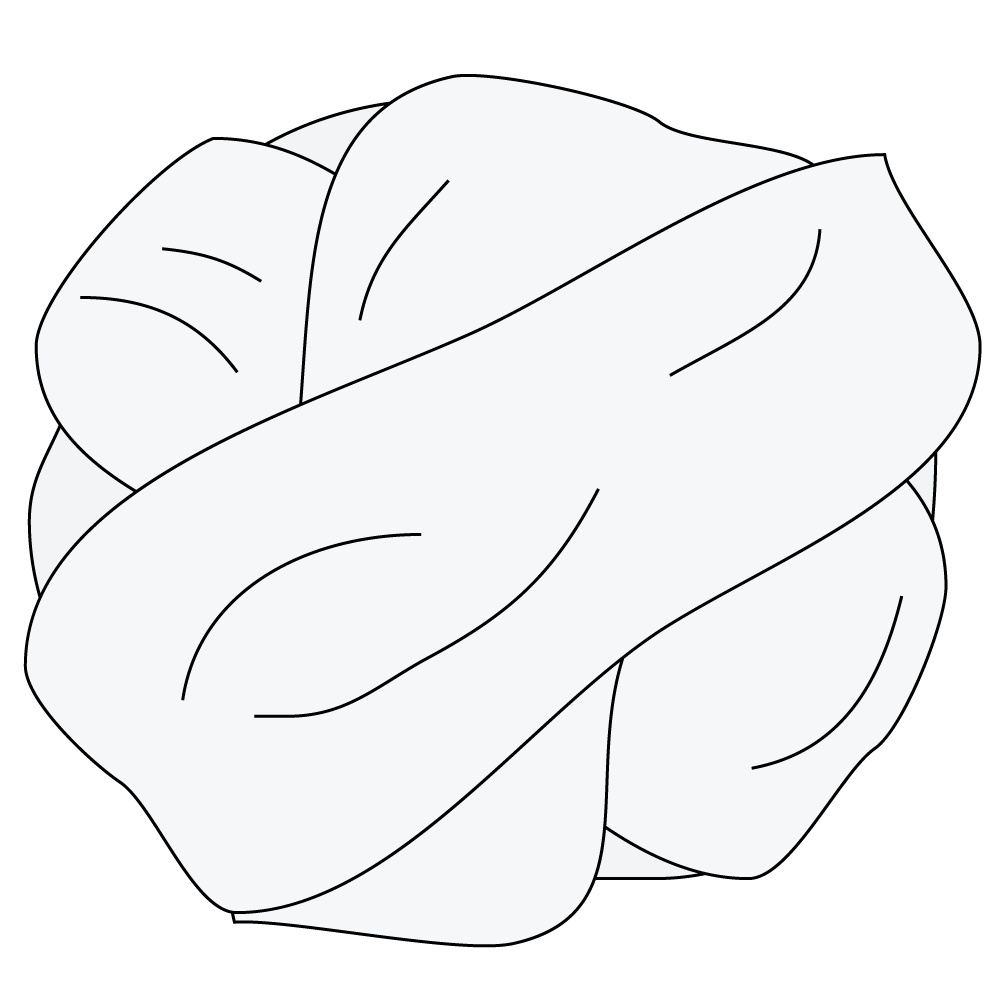
UKUYA ESIKHATHINI
Ukuya esikhathini, yilapho uketshezi oluncane olunegazi oluphuma esibelethweni lwehle ngomgudu luyophuma ngemomozi. Ukuya esikhathini kwenzeka ngenxa yamahomoni. Abantu abanezibeletho, izitho zangasese, amashubhu okuhamba kuwo amaqanda (fallopian tubes), nama-ovari bayaya esikhathini. Abantu bobulili obubili bangase baye esikhathini noma bangayi.
Ukuthola ulwazi oluthe xaxa ngabanobulili obubili, siza uvakashele - Kabanzi ngobulili obubili
Njalo ngenyanga, ulwelwesi lwesibeletho luyajiya ngegazi ukuze lulungiselele ukwamukela iqanda elivundisiwe. Uma iqanda livundiswa yisidoda sowesilisa, ukukhulelwa kuyenzeka. Uma iqanda lingavundisiwe, kuba nethuba lokuya esikhathini
Akuwona wonke umuntu oya esikhathini obonakala eyintombazane noma owesifazane.
Ukuze uthole ulwazi olwengeziwe mayelana noKuzazi Ngobulili, sicela uvakashele - Ukuzazi Ngobulili (Gender Identity)
Amantombazane anezinkulungwane zamaqanda ngaphakathi kwama ovari. Esikhathini sokuthomba, la maqanda aqala ukuvuthwa futhi aqale ukuphuma kuma- ovari angene emashubhini (fallopian tubes) eqonde esibelethweni ngalinye ngesikhathi, nyanga zonke (ngasekuqaleni lokhu akuvamile).
Ukuya esikhathini ngokujwayelekile kuqala phakathi kweminyaka eyi-12 neyi-14 kodwa kungaqala ngaphambi kwalesi khathi noma ngemuva kwaso. Ukuya esikhathini kuthatha izinsuku ezintathu kuya kweziyisithupha kodwa zingaba zinde noma zibemfushane. Iningi lamantombazane liyaya esikhathini kodwa kunezimo zempilo ezivimbela ukuya esikhathini. Ukukhubazeka okuthile kungaphazamisa ukuya esikhathini, kodwa ngokujwayelekile, amantombazane akhubazekile ayaya esikhathini.
Uhambo lweqanda lisuka kuma-ovari liya esibelethweni kubizwa ngokuthi yi-ovulation. Yilapho ukuya ocansini okungagcina kunomphumela wokukhulelwa.





Njalo ngenyanga iqanda elilodwa liya esibelethweni.

Uma abantu beya ocansini, futhi isidoda sowesilisa sifika eqandeni ngenkathi lisesibelethweni, kungenzeka iqanda livundiswe bese intombazane iyakhulelwa (uma kungenjalo, iye esikhathini).
Iqanda liya esibelethweni ngemigudu elihamba ngayo zinyanga zonke. Ukuba socansini olungavikelekile kungaholela ekungeneni kwesidoda esithweni sangasese sowesifazane bese sifica iqanda lisemgudwini oqonde esibelethweni.

Uma iqanda selifinyelele esibelethweni ngalesi sikhathi, iqanda nesidoda kuyahlangana.

Iqanda elivundisiwe=ukukhulelwa.
Amaseli aqala ukuhlukana aziphindaphinde akhe umbungu onamathela olwelwesini lwesibeletho,


Ukuya esikhathini ngokujwayelekile kuqala kusukele eminyakeni yobudala engaba yisi-9 kugcine phakathi kweminyaka engama-45 kuya kwengama-55. Isikhathi lapho sekuphelile ukuya esikhathini kuthiwa ukunqamuka kokuya esikhathini (imenophozi).
Wonke umuntu oya esikhathini unelungelo lemikhiqizo evumelana naye. Kubalulekile futhi ukuba babe nalo lonke ulwazi, izinsiza zezempilo kanye nokwesekwa abakudingayo ukuze bagweme izinhlungu nengcindezi okubangelwa izinguquko zamahomoni ngenxa yokuya esikhathini.
Ngesikhathi sokuya esikhathini, amantombazane kufanele asebenzise okuthile kokumunca igazi. Lokhu futhi kuvimbela izingubo zawo ukuba zingangcoli.

Ukopha okungakanani “okujwayelekile” ngethuba lokuya esikhathini?
Umthamo wegazi okujwayelekile ukuba uphume ngesikhathi sokuya esikhathini cishe kube yizipuni ezimbili (30ml). Abantu nokho abafani. Ukuphuma kwegazi lapho kuyiwa esikhathini kwabanye abantu kuba ngamathonsi egazi ambalwa usuku ngosuku. Kwabanye kungase kube izipuni ezimbili noma ngaphezulu ngezinye izinsuku. Iminyaka yobudala, ubude nesisindo kanye nokuthi umuntu uke waba nezingane yini kungaba nomthelela lapho umuntu eya esikhathini.
Amantombazane asebenzisa izindlela eziningi ukumuca igazi

Noma iyiphi impahla ehlanzekile ebamba kalula uketshezi njengezikibha ezindala ezisikiwe kungasetshenziswa. Kungasongwa kahle kube ngumsubelo bese kubekwa ngaphakathi kwephenti phakathi kwemilenze. Le misubelo kufanele ishintshwe njalo futhi iwashwe ngensipho namanzi abandayo, bese yomiswa. Uma kungenzeka, kufanele i-ayinwe ukuze kushe amagciwane.
Imisubelo ebizwa ngama-sanitary towels / pads yimisubelo ekhethekile ngokujwayelekile yenziwa ngovolo futhi ingathengwa ezitolo. Eminye imisubelo iyalahlwa, kanti eminye iyawasheka. Nayo ibekwa ngaphakathi ephentini phakathi kwenilenze. Eminye imisubelo inezinhlangthi ezinamathelayo ukuze umsubelo ubambeke endaweni eyodwa ephentini ungasuki. Eminye imisubelo inama “phikwana” asiza ekuvimbeleni ukuvuza. Umsubelo ophakathi nendawo ungabamba igazi elingangesipunu setiye (5ml) eliphuma kulowo osesikhathini.

Amathemponi amashubhu kavolo kakotini ashuthekwa esithweni sangasese ukuze abambe igazi. Kufanele kusetshenziswe eyodwa ngesikhathi futhi ashintshwe njalo ukuze kuvinjwe ukutheleleka ngamagciwane. Kubalulekile ukuqinisekisa ukuthi ithemponi yokugcina iyakhishwa ekupheleni kokuya esikhathini.

Iphepha lokwesula lasendlini yangasese (toilet paper), uvolo (cotton wool) nama-tissue angagoqwa kube imisubelo futhi kufakwe ngaphansi emaphentini phakathi kwemilenze. Qiniseka ukuthi akukho zinsalela zalezi zinto ezisala ngaphakathi esithweni sangasese ngoba lokho kungadala ukutheleleka ngamagciwane.

Izinkomishana zokuya esikhathini (Menstrual cups) ngokujwayelekile zenziwe nge-silicone engenayo irabha (latex-free). Inkomishana ifakwa embotsheni yesitho sangasese sowesifazane (imiyalelo inikeziwe). Zingafakwa amahora ayi-12 ngesikhathi, kulula ukuzihlanza futhi kulula ukubulala amagciwane. Zingahlala iminyaka uma zinakekelwa kahle. Ziyiphatha kahle futhi imvelo.

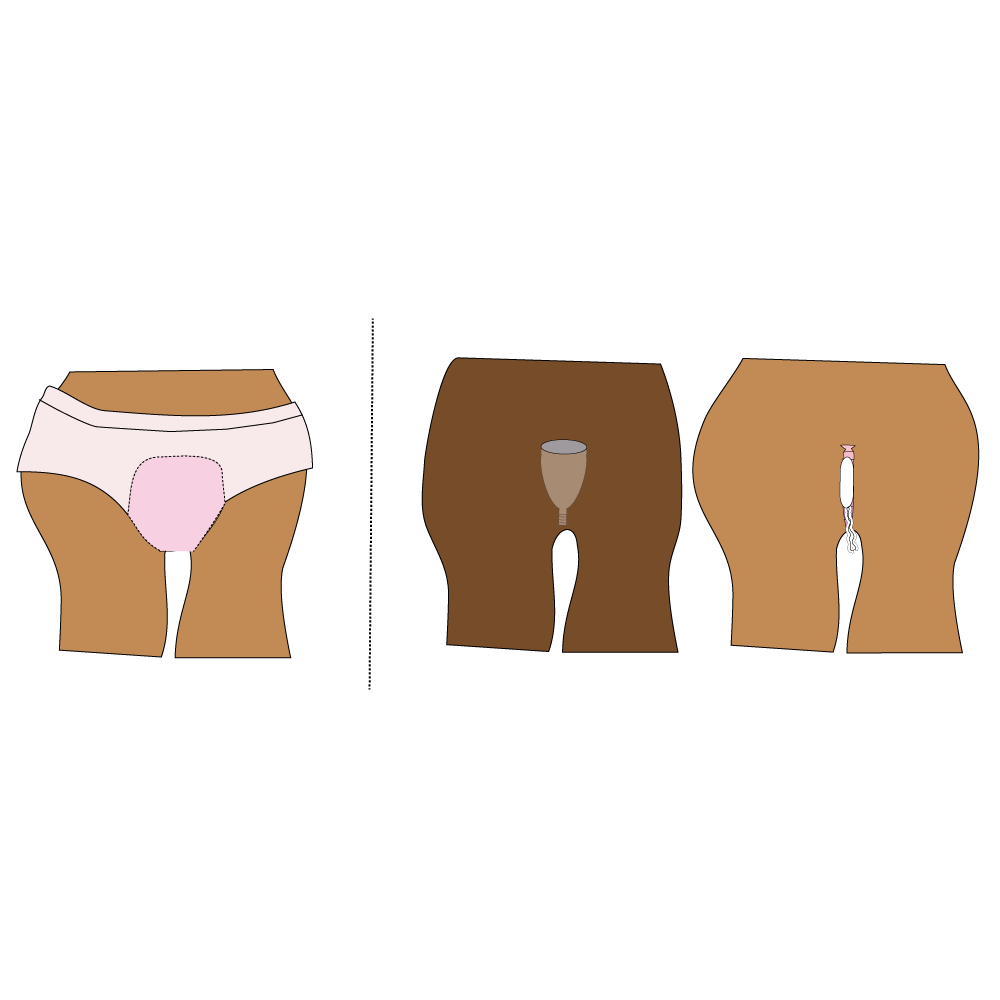
Imisubelo ifakwa ngaphakathi ephentini.
Amathemponi nezinkomishana zokuya esikhathini zishuthekwa ngaphakathi esithweni sangasese.
Ngingasebenzisa yini umsubelo owodwa noma ithemponi eyodwa ebusuku?
Kuya ngokuphuma kwegazi, umsubelo ungahlala kuze kube ngakusasa ungavuzi. Kungcono ukusebenzisa umsubelo kunethemponi ebusuku. Lokhu kunciphisa ingozi yokwakheka kwamagciwane okungaholela ekuthelelekeni ngawo.
Kufanele ngiwushintshe emva kwesikhathi esingakanani umsubelo noma ithemponi yami?
Kubalulekile ukushintsha umsubelo noma ithemponi njalo ukuze kuvimbeke ukuvuza kwegazi nokwanda kwamagciwane. Kuzoya ngokuthi igazi liphuma kangakanani nasekutheni ukuphi (esikoleni, emsebenzini noma ekuhambeni) ukuthi ungashintsha nini. Kunconywa ukuba umsubelo noma ithamponi ishintshwe njalo emahoreni ama-4 kuya kwayi-6 ukuvimbela ukuvuza kwegazi nokutheleleka ngamagciwane.
Kubalulekile ukugeza njalo. Igazi lokuya esikhathini alingcolile, kodwa lingase libe nephunga emva kokuhlangana nomoya.

Kwesinye isikhathi amantombazane aye asabe ukuthi imisubelo izobonakala. Ukubuza umngani noma ukuzibuka esibukweni ukuhlola ukuthi kuyabonakala yini, yikhona kuphela okudingekayo. Kwesinye isikhathi umsubelo uzwakala umkhulu kakhulu kunalokho oyikho.

Ukuba sesikhathini kuthatha isikhathi esingakanani?
Ukopha kokuya esikhathini kuvame ukuthatha izinsuku ezi-4 kuya kweziyi-6 , kepha zingabamfushane noma zibe zinde. Ukopha kungase kungenzeki ngezikhathi ezithile, noma ngezinga elifanayo. Phakathi nosuku noma ebusuku, noma kusukela kolunye usuku kuya kolulandelayo.
Goqa imisubelo namathemponi ngephepha noma ngeplastiki ukulahle ngokucophelela. Ungaflashi endlini yangasese noma yimiphi imikhiqizo, ngaphandle kwephepha lokwesula elisetshenziswa endlini yangasese. Goqa imisubelo noma amathemponi ngephepha lokwesula noma ngeplastiki ukulahle emgqonyeni wezibi.


MENSTRUASIE
Menstruasie (maandstonde), is wanneer 'n klein hoeveelheid bloederige vloeistof uit die baarmoeder deur die vagina vrygestel word. Menstruasie vind plaas as gevolg van hormone. Mense wat ‘n baarmoeder, vagina, fallopiese buise en eierstokke het, kry hul maandstonde (menstrureer). Interseks mense kan of kan nie menstrueer nie.
Vir meer inligting oor interseks, besoek asseblief - Meer oor interseks
Elke maand word die voering van die baarmoeder verdik met bloed om voor te berei om 'n bevrugte eier te ontvang. As die eier deur 'n sperm van 'n man/seun bevrug word, vind swangerskap plaas. Wanneer die eier nie bevrug word nie, vind 'n menstruasieperiode plaas.
Nie almal wat menstrueer kan geidentifiseer word as 'n meisie of vrou nie.
Vir meer inligting oor geslagsidentiteit, besoek - Geslagsidentiteit (Gender Identity)
Vroue/meisies het duisende eiers in hul eierstokke. By puberteit begin hierdie eiers volwasse word en begin elke maand uit die eierstokke in die fallopiese buise spring (aanvanklik is dit nie gereeld nie).
Menstruasie begin gewoonlik tussen 12 en 14 jaar, maar kan vroeër of later begin. Menstruasieperiode duur gewoonlik tussen drie en ses dae, maar kan langer of korter wees. Die meeste vroue/meisies kry hulle menstruasie maar daar is mediese toestande wat menstruasie voorkom. Sekere gestremdhede beïnvloed menstruasie maar oor die algemeen het vroue/meisies met gestremdhede wel menstruasie.
Wanneer die eier van die eierstokke na die baarmoeder beweeg, word dit ovulasie genoem. Dit is wanneer seks mees waarskynlik tot swangerskap sal lei.





Elke maand beweeg een van die eiers na die baarmoeder.

As mense seks het en die sperm van die man/seun bereik die eier terwyl dit in die baarmoeder is, sal die eier waarskynlik bevrug word en die vrou/meisie word swanger (indien nie, vind 'n menstruasieperiode plaas).
'n Eier beweeg elke maand na die baarmoeder in die fallopiese buis. Onbeskermde seksuele omgang kan daartoe lei dat sperms die vagina binnedring en die eier in die fallopiese buis bereik.

As die sperm op hierdie stadium die eier bereik het, verbind die sperm en eier saam.

Bevrugte eier = swangerskap. Selle begin verdeel om 'n embrio te vorm wat aan die voering van die baarmoeder heg.


Menstruasie begin gewoonlik vanaf die ouderdom van ongeveer 9 jaar en stop rondom die ouderdom van 45 tot 55 jaar. Die tyd wanneer menstruasie eindig, word menopouse genoem.
Almal wat menstrueer het die reg op menstruasieprodukte wat hulle pas. Dit is ook belangrik dat hulle al die inligting, gesondheidsdienste en ondersteuning ontvang wat hulle nodig het om pyn of nood wat veroorsaak word deur hormonale veranderinge as gevolg van menstruasie te bestuur/hanteer.
Tydens menstruasie moet vroue/meisies van iets gebruik maak om die bloed op te vang. Dit voorkom ook dat hul klere gevlek word.

Hoeveel bloeding is "normaal" gedurende 'n menstruasie tydperk?
Die mees algemene hoeveelheid menstruele vloei in 'n hele menstruasie tydperk is ongeveer twee eetlepels (30 ml). Almal is anders. Sommige mense se menstruele vloei is net 'n paar druppels daagliks; vir 'n paar kan dit op sommige dae twee eetlepels of meer wees. Faktore soos ouderdom, lengte en gewig en of 'n persoon kinders gehad het, kan hul tydperk en hoeveelheid beïnvloed.
Meisies gebruik baie metodes om die bloed op te vang.

Enige skoon materiaal wat maklik vloeistof opsuig soos ou opgesnyde t-hemde kan gebruik word. Vou die materiaal goed in 'n kussingagtige vorm en plaas binne die broekie tussen die bene. Dit moet gereeld verander word en met seep en koue water gewas word, dan laat droog word. Indien moontlik, moet hulle gestryk word om kieme dood te maak.
Sanitêre doekiesis spesiale doekies wat gewoonlik van watte gemaak word en kan by meeste winkels gekoop word. Sommige doekies is weggooibaar, en ander is wasbaar. Hulle word ook binne die broekie tussen die bene geplaas. Sommige het 'n taai kant om die doekie in plek te hou. Sommige het 'vlerke' wat help om lekkasies te voorkom. 'n Medium doekie kan tot 'n teelepel (5 ml) menstruele vloeistof hou.

Tampons is buise watte wat in die vagina geplaas word om die bloed op te vang. Hulle moet een op 'n slag gebruik word en gereeld verander word om infeksie te voorkom. Dit is belangrik om seker te maak dat die laaste tampon aan die einde van die menstruasie tydperk verwyder word.

Toiletpapier, watte of sneesdoekies kan in doekie gevou word en binne die broekie tussen die bene geplaas word. Maak seker dat stukkies nie in die vagina gelaat word nie, aangesien dit infeksie kan veroorsaak.

Menstruasiekoppies word gewoonlik van latexvrye silikoon gemaak. Die koppie word in die vaginale opening geplaas (instruksies word verskaf). Hulle kan tot 12 uur op 'n slag gedra word, is maklik om skoon te maak en maklik om te steriliseer. Hulle kan vir jare hou as dit reg opgepas word. Hulle is ook beter vir die omgewing..


Sanitêre doekies word binne-in die onderklere gedra.
Tampons en menstruele koppies word binne die vagina gedra.
Kan ek een sanitêre doekie of tampon oornag gebruik?
Afhangende van jou vloei, sal 'n sanitêre doekie gewoonlik jou deur die nag se slaap hou sonder om te lek. Dit is beter om 'n sanitêre doekie as 'n tampon oornag te gebruik. Dit verminder die risiko van bakterieë opbou wat tot infeksie kan lei.
Hoe gereeld moet ek my sanitêre doekie of tampon verander?
Dit is belangrik om die sanitêre doekie of tampon gereeld te verander om lekkasie en groei van bakterieë te voorkom. Dit sal afhang van die persoon se menstruele vloei en waar hulle is (by die skool, werk of op reis) wanneer hulle kan verander. Dit is raadsaam om die sanitêre doekie of tampon elke 4-6 uur te verander om lekkasie of infeksie te voorkom.
Dit is belangrik om gereeld te was/bad. Menstruele bloed is nie vuil nie, maar dit kan ‘n reuk afgee nadat dit met lug in aanraking gekom het.

Soms is meisies bang dat ander mense die doekies of wattelappe kan sien. Om 'n vriend te vra of in die spieël te kyk om te kyk of dit wys, is al wat nodig is. 'n Sanitêre doekies voel baie groter as wat dit lyk.

Hoe lank duur 'n menstrasie siklus?
Menstruele bloeding duur gewoonlik 4 tot 6 dae maar dit kan korter of langer wees. Bloeding mag nie met gereelde tussenposes, of teen dieselfde tempo deur die dag of nag, of van een dag na die volgende voorkom nie.
Draai sanitêre doekies/tampons in papier of plastiek toe en gooi dit versigtig weg. Moenie enige produkte (behalwe toiletpapier) in die toilet afspoel nie. Draai jou sanitêre doekie of tampon in toiletpapier toe en sit in die asblik.


Ho ilela khoeli
Ho ya matsatsing/kgweding, ke ha lero le lenyane le madinyana le tswang popelong le ntshwa ka kuku(botshehadi). Ho ya matsatsing/kgweding ho etsahala ka lebaka la dihomone. Batho ba nang le dipopelo, dikuku, ditjhupu tsa fallopian, le diouvari ba ya matsatsing/kgweding. Batho ba holang ba sa totobala hore ba batona kapa ba batshehadi ba ka nna ba ya matsatsing/kgweding kapa ba ka nna ba se ye.
Ho fumana lesedi le fetang lena ka ho hola o sa totobala hore o motona kapa o motshehadi, etela - karolo ya Dintlha tse ding tse buang ka ho hola o sa totobala hore o motona kapa o motshehadi
Kgweding e nngwe le e nngwe, lera la popelo le ba letenya ke madi ho lokisetsa ho amohela lehe le nontshitsweng. Ha lehe le nontshitswe ke peo ya botona e tswang mothong e motona, boimana bo a dula. Ha lehe le sa nontshwa, ho ya matsatsing/kgweding ho a etsahala.
Ha se motho e mong le e mong ya yang matsatsing/kgweding ya ipitsang ngwanana kapa mosadi.
Ho fumana lesedi le fetang lena ka maikutlo a bong boo motho a ikamahanyang le bona, etela - karolo ya Maikutlo a bong boo motho a ikamahanyang le bona
Banana ba na le diketekete tsa mahe ka hara diouvari tsa bona. Dilemong tsa borwetsana, mahe ana a qala ho butswa mme ho qale ho tswa le le leng ka nako ka hara diouvari le kene ka hara ditjhupu tsa fallopian, kgwedi e nngwe le e nngwe. (qalong, hona ha ho etsahale kamehla).
Hangata ho ya matsatsing/kgweding ho qala pakeng tsa dilemo tse 12 le 14 empa ho ka qala pejana kapa kamorao ho moo. Ho ya matsatsing/kgweding ho etsahala pakeng tsa matsatsi a mararo le a tsheletseng empa ho ka nka nako e teletsana kapa e kgutshwanyane. Boholo ba banana ba ya matsatsing/kgweding empa ho na le maemo a bongaka a thibelang ho ya matsatsing/kgweding. Boqhwala bo itseng bo ama ketsahalo ya ho ya matsatsing empa ka kakaretso, banana ba nang le boqhwala ba ya matsatsing/kgweding.
Ha lehe le tsamaya ho tloha diouvaring ho ya popelong, hoo ho bitswa ovuleishene. Mona ke moo ho etsa thobalano ho nang le kgonahalo ya ho etsa hore ngwanana a ime.





Kgwedi e nngwe le e nngwe, lehe le le leng le tsamayela popelong.

Haeba batho ba etsa thobalano mme peo ya botona e fihla leheng le sa ntse le le ka hara popelo, ho na le kgonahalo ya hore lehe le nontshwe mme ngwanana o a ima (haeba a sa ime, o ya matsatsing/kgweding).
Lehe le tsamayela popelong ka hara tjhupu ya fallopian kgwedi e nngwe le e nngwe. Thobalano e sa sireletsehang e ka etsa hore peo ya botona e kene ka hara kuku(botshehadi). mme e fihlele lehe le ka hara tjhupu ya fallopian.

Ha peo ya botona e fihletse lehe sebakeng sena, peo ya botona le lehe di a kopana.

Lehe le nontshitsweng = boimana. Disele di qala ho arohana ho ba embriyo e kopanang le lera la popelo.


Hangata ho ya matsatsing/kgweding ho qala ho tloha dilemong tse ka bang tse robong le ho kgaotsa dilemong tse 45-55. Nako ya ho kgaotsa ho ya matsatsing/kgweding e bitswa menophoso.
Motho e mong le e mong ya yang matsatsing/kgweding o na le tokelo ya ho ba le dihlahiswa tse mo tshwanelang tseo a di sebedisang ha a le matsatsing/kgweding. Ho bohlokwa le hore ba be le lesedi, ditshebeletso tsa bophelo le tshehetso kaofela eo ba e hlokang ho laola lehlaba kapa bohloko bo bakwang ke diphetoho tsa dihomone ka lebaka la ho ya matsatsing/kgweding.
Nakong ya ho ya matsatsing/kgweding, banana ba hloka ho sebedisa ho hong ho inela madi. Hona ho thibela le hore diaparo tsa bona di se be le mabadi.

Madi a tswang a nkwang e le a "tlwaelehileng" nakong ya ho ya matsatsing/kgweding ke a makae?
Palo e tlwaelehileng ka ho fetisisa ya phallo ya madi a ho ya matsatsing/kgweding ke dikgaba tse ka bang tse pedi (30ml). Motho e mong le e mong o fapane. Phallo ya batho ba bang ya madi a ho ya matsatsing/kgweding ke marothodi a mmalwa feela ka letsatsi; ho ba seng bakae e ka ba dikgaba tse pedi kapa ho feta ka matsatsi a mang. Dintho tse jwalo ka dilemo, bolelele le boima le hore na motho o bile le bana, di ka ama ho ya matsatsing/kgweding ha hae.
Banana ba sebedisa mekgwa e mengata ya ho inela madi

Lesela lefe kapa lefe le hlwekileng le inelang habobebe le kang hempe ya kgale e tabotsweng, le ka sebediswa. Mena lesela hantle ka sebopeho sa phete mme o le behe ka hara phenti pakeng tsa maoto. Masela ana a ka fetolwa kgafetsa le ho hlatswa ka sesepa le metsi a batang, ebe a a omiswa. Haeba ho kgoneha, a lokela ho aenwa ho bolaya dikokwanahloko.
Diphete ke disebediswa tse ikgethang tseo hangata di entsweng ka wulu ya khothene ebile di kgona ho rekwa mabenkeleng a itseng. Diphete tse ding di a lahlwa, tse ding di a hlatswa. Le tsona di behwa ka hara diphenti pakeng tsa maoto. Tse ding di na le lehlakore le mamarelang hore phete e se suthe. Tse ding di na le 'mapheo’ a thusang ho thibela ho dutla. Phete e mahareng e tshwara kgaba ya teye (5ml) ya madi.

Dithempone ke ditjhupu tsa wulu ya khothene tse kengwang ka hara kuku(botshehadi) ho nka madi. Di lokela ho sebediswa hanngwe ka nako le ho ntshwa kgafetsa ho thibela tshwaetso. Ho bohlokwa ho netefatsa hore thempone ya ho qetela e a ntshwa ha nako ya ho ya matsatsing/kgweding e feela.

Pampiri e bonolo ya ntlwana, wulu ya khothene kapa dithishu di ka menwa ho ba diphete le ho behwa ka hara diphenti pakeng tsa maoto. Netefatsa hore dipampitshana ha di salle ka hara kuku ka ha sena se ka etsa hore ho be le tshwaetso.

Dikopi tsa ho kgaketsa madi hangata di entswe ka silikhone e se nang leithekse. Kopi e kengwa ka hara lesoba la kuku (ho fanwe ka ditaelo). Di ka kengwa ho fihla dihoreng tse 12 ka nako, di hlwekiseha habobebe. Di ka sebetsa dilemo ha di hlokometswe ka nepo. Di loketse le tikoloho.


Diphete di kengwa ka hara phenti.
Dithempone le dikopi tse kgaketsang madi a ho ya matsatsing/kgweding di kengwa ka hara kuku.
Na nka sebedisa phete kapa thempone e le nngwe bosiu kaofela?
Ho itshetlehile ka phallo ya hao, hangata phete e tla nka bosiu kaofela e sa dutle. Ho betere ho sebedisa phete bosiu kaofela ho na le thempone. Hona ho fokotsa kotsi ya ho bokellana ha baktheria ho ka etsang hore ho be le tshwaetso.
Ke lokela ho ntsha phete kapa thempone ya ka e sebeditseng le ho kenya e ntjha makgetlo a makae?
Ho bohlokwa ho ntsha phete kapa thempone e sebeditseng le ho kenya e ntjha kamehla ho etsa hore e se dutle le hore baktheria e se hole. Ho tla ya ka phallo ya motho ya madi le hore o hokae (sekolong, mosebetsing kapa o leetong) ha a kgona ho e ntsha le hore a kenye e ntjha. O eletswa ho ntsha phete kapa thempone e sebeditseng le ho kenya e ntjha dihora tse ding le tse ding tse 4-6 ho etsa hore e se dutle kapa ho se be le tshwaetso.
Ho bohlokwa ho hlapa kgafetsa. Madi a nako ya matsatsing/kgweding ha a ditshila, empa a ka nkga ha a fumana moya.

Ka dinako tse ding banana ba tshaba hore batho ba bang ba ka bona diphete kapa mekotla ya bona ya khothene. Ho kopa motswalle kapa ho sheba seiponeng ho bona hore na e a bonahala ke hona feela ho hlokehang. Phete e utlwahala e le kgolwanyana ho feta kamoo e shebahalang ka teng.

Ho ya matsatsing/kgweding ho nka nako e kae?
Ho ya matsatsing/kgweding hangata ho nka matsatsi a 4 – 6 - empa ho ka nka nako e teletsana kapa e kgutshwanyane. Ho tswa madi a mangata ho ka nna ha se etsahale kamehla, kapa ka sekgahla se tshwanang motshehare le bosiu, kapa ho tloha letsatsing le leng ho ya ho le leng.
Phuthela diphete/dithempone ka pampiri kapa polasetiki mme o di lahle ka hloko. O se ke wa hulela dihlahiswa dife kapa dife (ntle le pampiri e bonolo ya ntlwana) ka ntlwaneng. Phuthela phete kapa thempone ya hao ka pampiri ya ntlwana mme o e kenye ka hara setshelo sa matlakala.

